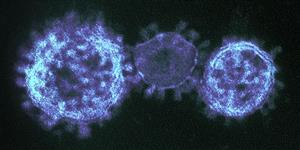|
In the current CoVid-19 situation, many may be wondering how far we go in protecting ourselves and our staff in our day-to-day work. Some of us remain in operation, seeing urgent cases and this may involve patients with acute problems including red eyes, epiphora, allergies, "conjunctivitis" and other ocular presentations which themselves may be a small part of the spectrum of symptoms experienced by patients with CoVid-19. Or, these or other symptoms, may co-exist in patients who have more mainstream features of the disease (hopefully, these latter patients would have been screened out by procedures detailed in my previous post, and have been referred to the local hospital for further assessment).
In any case, what protective equipment should we be donning to shield ourselves from potential infection?
0 Comments
I share with you some important eyecare-specific information, from the American Academy of Ophthalmology and the Royal Australian and New Zealand College of Ophthalmology, related to the novel coronavirus, referred to as severe acute respiratory syndrome coronavirus 2 (SARS-CoV-2). The highly contagious virus can cause a severe respiratory disease known as Corona Virus Disease - 2019 (COVID-19). (My region-specific advice for South West and Western Victoria are included in red)) Background information on COVID-19: Symptoms can appear as soon as 2 days or as long as 14 days after exposure. The virus is believed to spread primarily via person-to-person through respiratory droplets produced when an infected person coughs or sneezes. It also could be spread if people touch an object or surface with virus present from an infected person, and then touch their mouth, nose or eyes. Viral RNA has also been found in stool samples from infected patients, raising the possibility of transmission through the fecal/oral route. There is a possibility of asymptomatic transmission. A Feb. 21 report in JAMA details a case of an asymptomatic carrier who possibly infected 5 family members despite having normal chest computed tomography (CT) findings. These reports, however, are preliminary. What you need to know
|
AuthorDr Vincent Lee, Archives
April 2020
Categories
All
|
Proudly powered by Weebly



 RSS Feed
RSS Feed